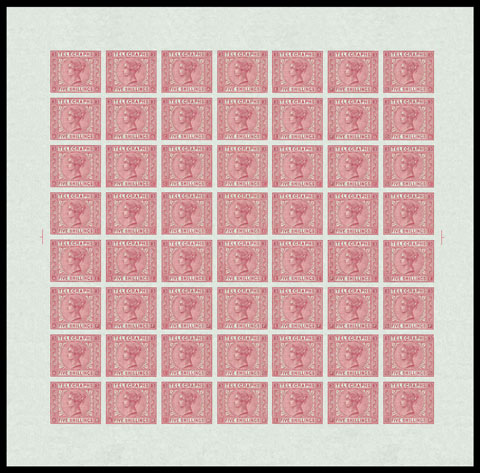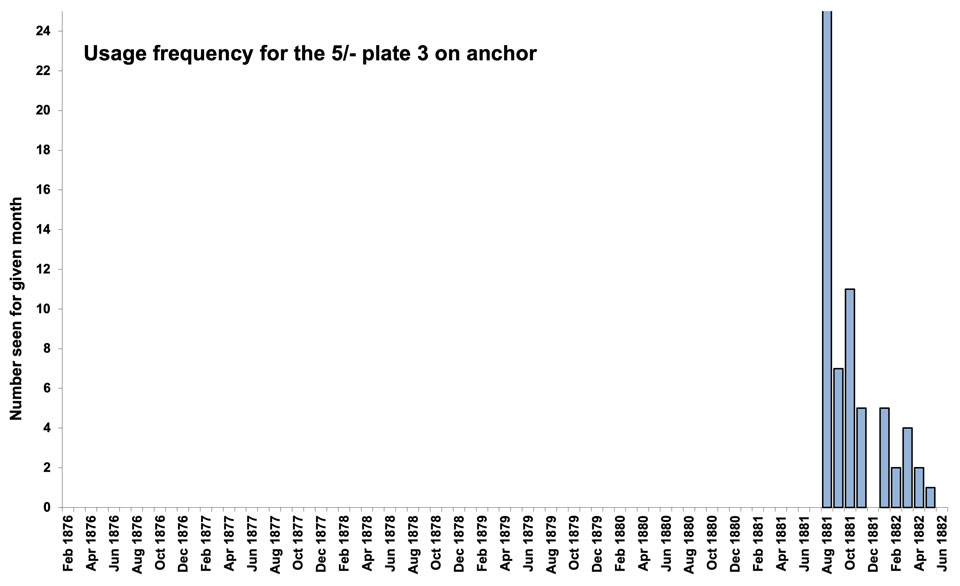1 Essays
2 Die Proofs
3 Sheet Layout
4 Plate Proofs
5 Paper
6 Colour Trials
7 Imprimaturs
8 Colour Standards
9 Specimens
10 Issued Stamps
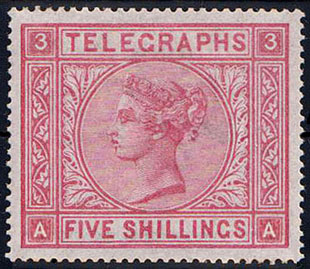
Date: May 1881
Plates: 3
Printer: De La Rue
Watermark: Large Anchor
Perforation: 14
In 1881 the Post Office decided to use Large Anchor paper for the 5s telegraph stamp. This paper had been in use for fiscal stamps for many years, and it was now intended to be used for all high value postage and telegraph stamps. Postage stamps were converted over the next few years, but only the 5s telegraph was converted before telegraph stamps were discontinued.
Around the same time, values on Spray of Rose paper were converted to Crown paper (3d, 6d, 1s, 3s) and registration sheets were endorsed “Proof after alteration of Plate”. However, no such registration sheet was taken for the altered 5s plate and so there are no imprimaturs on Large Anchor paper and, since this was an altered plate, there are no essays or die proofs.
Sheet Layout
The sheet had 56 stamps in one large pane, arranged as eight rows of seven. The margins were plain except for a small perforating and dividing guide mark at each side of the sheet.
A Post Office sheet was a half-sheet of 28 stamps, valued at seven pounds.
Computer generated image, click to enlarge.
Plate Proofs
There are no plate proofs for the altered plate.
Paper
From 1881, plate 3 was printed on Large Anchor paper. The fiscal paper was blued to various degrees by the addition of prussiate of potash.
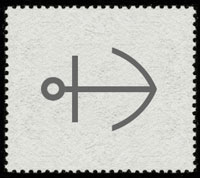
The watermark as seen from the front of the stamp.
For more details on Large Anchor paper click here.
Colour Trials
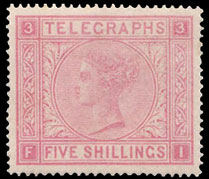
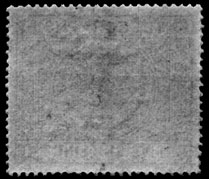
An unused example exists, lettered FI. This lettering is impossible for the altered plate on Large Anchor paper and as such it cannot be an “as issued” stamp.
The colour is somewhat pale and the watermark is upright instead of sideways. The stamp appears to be genuine and as such might be some form of trial. Possibly a small plate was made in a similar manner to the 3d on Crown trials, although in this case from the excess leads from the alteration, and a trial conducted either for colour or, maybe more likely, for the Large Anchor paper.
Imprimaturs
The altered plate was not re-registered.
There are no imprimaturs on Large Anchor paper.
Colour Standards
There are no known colour standards on Large Anchor paper, but perhaps the six Type 12 specimens described below could be colour standards under “the 1880 system” (see Wiseman Vol. 1, pp. 99-100).
Specimens
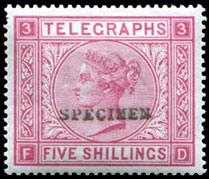
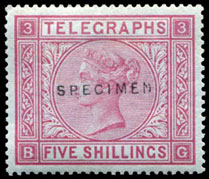
Plate 3 Type 9c: rare, from a half sheet (AA-GD), all singles.
Plate 3 Type 12: rare, from a block of six (AG-CH), with BH in the Langmead Collection.
Reference to scarcity, blocks and the number of sheets or panes so treated is derived from reconstructions of known examples within our database.
Issued Stamps
Stamps on Large Anchor paper were issued from plate 3 only.
The usage frequency graph shows that plate 3 was used from Aug 1881.
Click the graph to enlarge.
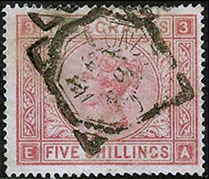
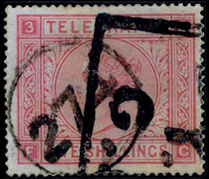
Postal, fiscal, and railway usage are rare, with one possible postal usage and one 274 “English Station” railway numerals known to us.
Issued Stamps — Plate 3
Plate 3 (current no. 567) was registered on 14 Oct 1878 and put to press on 14 May 1881. 14,000 sheets were printed on Large Anchor paper before telegraph stamps were discontinued.
Scarcity #37 in mint telegraphs, #33 in used telegraphs.
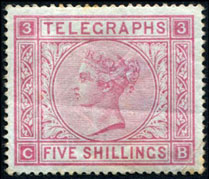
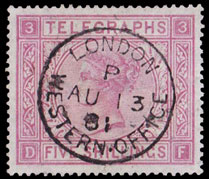
Plate 3 on Large Anchor is the rarest of all the mint telegraphs with only a handful in private hands. There are no mint multiples.
Used stamps are rare. No used multiples are known to us. The earliest known used example is often stated as 20 May 1881, but this has not been seen by us. The earliest date in our database is 13 Aug 1881 at the London Western Office (illustrated).
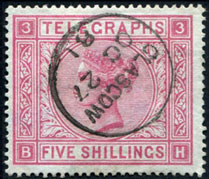
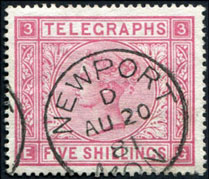
The fiscal paper was blued to various degrees, the example on the left being typical and that on the right is white, which is more scarce.
No inverted watermarks are known to us.
One sideways watermark is known, see “colour trials” above.
